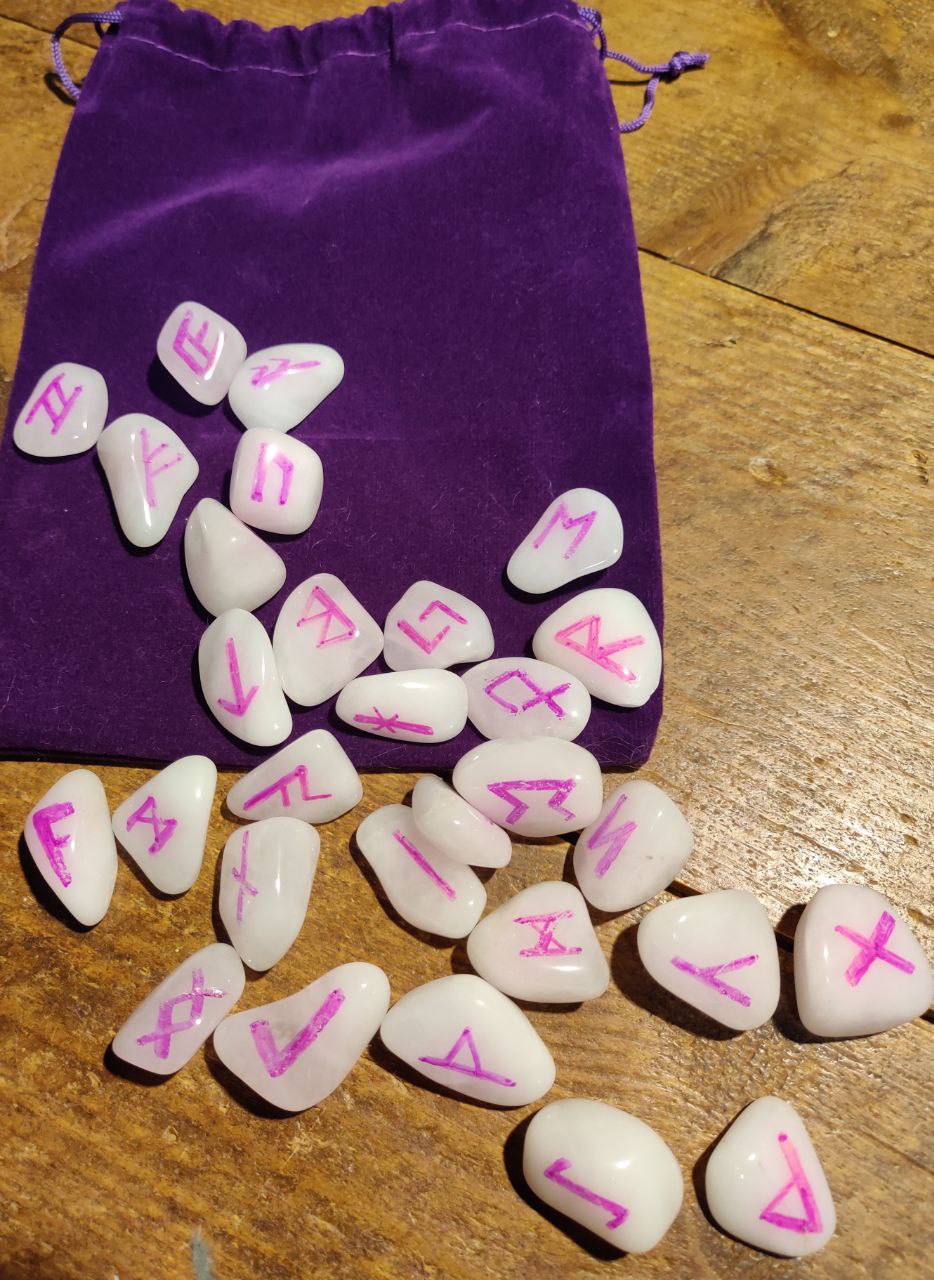Posts Tagged: Runic Shamanism


Runecraft; Reading the Runes
In a previous post I talked about a book that was recently recommended to me called Galdrbok, Practical Heathen Runecraft, Shamanism, & Magic by Nathan J Johnson and Robert J Wallis. This book is a fascinating attempt to recover our indigenous European shamanism known as the Northern Tradition, as practised by our Saxon ancestors in the ancient Old North. See the original post here:
Book Review: Galdrbok, Practial Heathen Runecraft, Shamanism & Magic
In this post I would like to focus on the topic of Runecraft; the powerful technique of reading Runes.
Runes are small, coin-sized objects on which various glyphs are inscribed. They can be bought or made from pebbles, stones, pieces of wood, or metallic objects. They are kept in a pouch or box and the container acts as a device for casting the runes by pulling one out or shaking the bag until the appropriate number falls out.
Runes are commonly presented as tools for divination or magic and our Anglo-Saxon ancestors inscribed them onto weapons and jewellery as a form of coded messages or magical spells.
As well as using them for magic and divination, the authors use Runic practice as a method for inducing the trance state.
We know that a common feature of all Shamanic practice across the Earth is entering into a trace state in order to travel to Non-Ordinary Reality (NOR) or ‘Spirit Mind’ to access the healing and wisdom of spirit guides. This state can be achieved through plant medicines but was more commonly accessed through percussion sounds, particularly drumming.
The Runester accesses the trance state via the Runes to explore the nine realms of the world tree, Yggdrasil and meet the corresponding Sprits that inhabit them for personal development work.
The Runic alphabet originates in the Mediterranean alphabets of Etruscan, Greek, and Latin and also the Runic glyphs of the various Scandinavian, Germanic, and English systems. The glyphs give runes more in common with the Egyptian and Mayan Hieroglyphs or the Hebrew letters than with the Greek and Latin scripts.
There are several Runic alphabets across Northwest Europe with many similarities as well as differences in the number, shape, and order as well as the associated poems. Each version varies according to the time and place, with no definitive or authentic set or official version to follow.
The Younger Futhark comprises sixteen runes.
The common Germanic or Elder Futhark has twenty-four runes.
The Anglo-Saxon Futhorc has twenty-nine runes.
The Northumbrian row has thirty-three runes.
The authors have done their research, discovering that the most complete and informative of the rune poems is the Anglo-Saxon Futhorc which is presented in the book as a coherent system.
Each Rune comprises a letter and a symbol and the meaning is taken from a stanza of the Anglo-Saxon rune poem.
The book contains a new translation of the Anglo-Saxon rune poem with one rune and interpretation filling one page, providing the Rune Glyph with the Anglo-Saxon name and a modern translation.
The method of using the Runes as a divination tool is to hold the bag in your hand, attune yourself, and shake it thoroughly before focusing on the question and casting or selecting a rune.
Once a rune has been selected you can refer to the appropriate stanza of the poem and meditate on the meaning in your life.
I enjoyed making my own rune set and I have found the poem fascinating to read. I have recorded my questions and answers in a notebook so that I can develop my own, personal interpretation of their meaning.